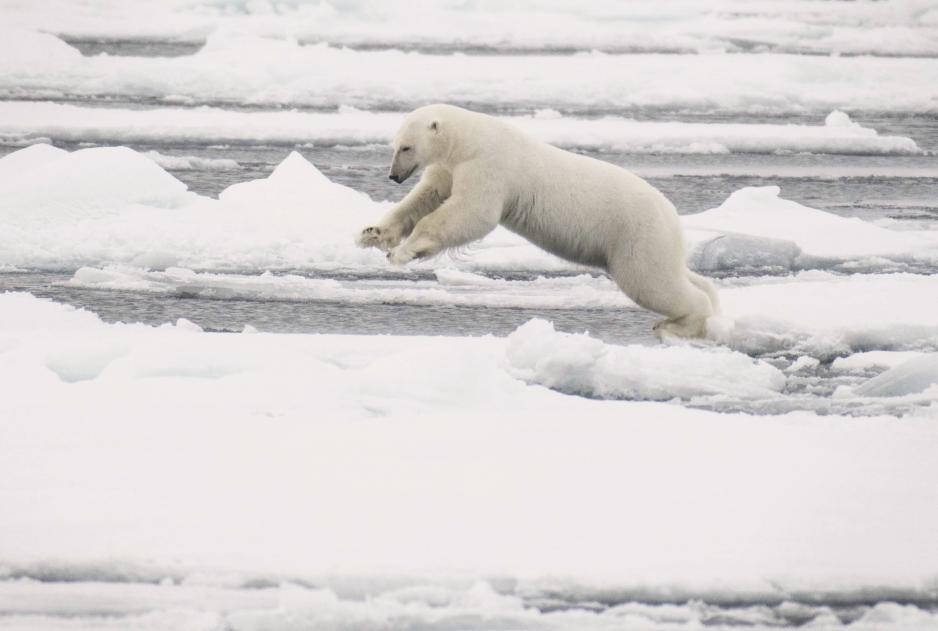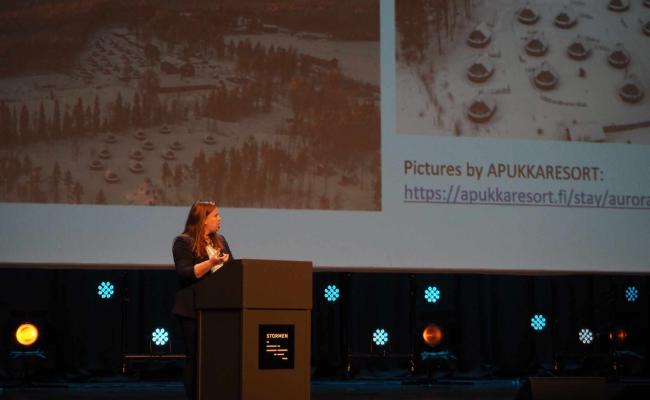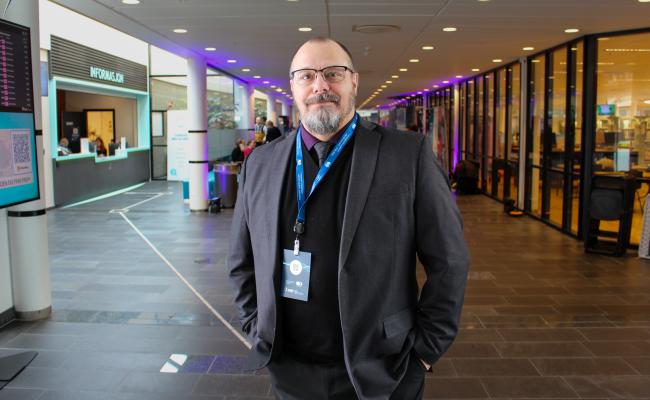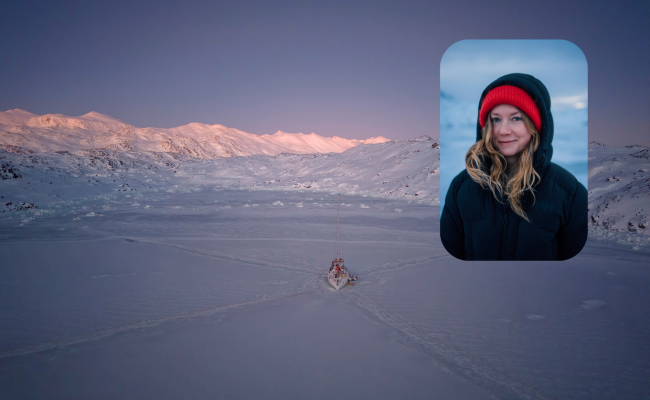The Arctic Scientist Profiles: Arctic Researcher Charlotte (27): “There Is So Much Beauty to Look After”
Charlotte Gehrke has explored the use of Arctic marine mammals in science communication and how these animals are utilized to convey broader issues related to the Arctic. (Photo: Birgitte Annie Hansen)
Arctic researcher Charlotte Gehrke incorporates her journalistic training into her research, valuing science communication as a democratic project, particularly in the current political and environmental situation.
Researcher Charlotte Gehrke is originally from Germany, but her love of the Arctic and environmental policy has taken her all over the world in pursuit of knowledge.
She has studied in Wales, New Zealand, Australia, France, the United States, Canada, and most recently, at Nord University in Bodø, where she concluded her PhD just last week. Her thesis focused on Arctic marine mammals and their role in Arctic science communication and diplomacy.
"Everything boils down to one thing," she says to High North News. "This is a beautiful place to take care of."
From research assistant to Arctic communicator
At Cardiff University in Wales, she assisted Dr. Hannes Hansen-Magnusson with research on multilateral diplomacy in the Arctic, kicking off a deep interest in all things Arctic, but specifically Arctic science communication and diplomacy.
Together, they started the Arctic Relations blog in 2020, featuring scholarship and stories from the circumpolar North, showcasing Gehrke's passion for science communication.
"We have a broad range of stories, from history to geography, to film reviews and reports from Indigenous youths," she says, enthusiastically adding: "We even have a story about Santa!"
The work is voluntary, both by Gehrke and Hansen-Magnusson, as well as the contributors. The blog illustrates Gehrke's passion for science dissemination and how important it is not just to talk the talk, but also walk the walk.
Arctic marine mammals
In her PhD project, Charlotte has explored the use of Arctic marine mammals (AMMs: polar bears, seals, walruses, and whales) in science communication and how these animals are utilized to convey broader issues related to the Arctic.
"These are all animals people think about when they think about the Arctic, the animals they'd see in a David Attenborough documentary," she explains, adding that they are referred to as charismatic megafauna, meaning that they are species that are large in the category they represent and have symbolic value or widespread popular appeal.
"We use these species to communicate broader stories about the Arctic, particularly concerning the effect of climate change," she says.
She found that one issue is the excessive reliance on images of these animals, which creates a disparity between the reality of the Arctic and the media's image of it. Most notably, Indigenous peoples are being erased from stories about the Arctic.
"We have something called the National Geographic effect, where we have these amazing charismatic species that are great to use to connect with people because everyone knows what a polar bear is, and you can build on that connection," she says.
But the reliance on these animals makes people forget that people are living in these places. She says that one of her interviewees even said that people care more about animals than they do about Indigenous peoples, making the animal images a more powerful image when telling Arctic stories and influencing environmental policy.

The polar bear has long been the undisputed king of the Arctic. (Archive photo from Svalbard: Peter Prokosch)
"We tie narratives so closely to polar bears that the first thing people think of when they think about climate change is a polar bear on a disappearing ice floe," she says, and continues:
"The danger is that some people use these animals to spread climate scepticism. They say that polar bears are doing well in Svalbard, so climate change cannot be real."
Thus, the media's over-reliance on Arctic marine mammals has made them the symbol of climate change in the Arctic, and some struggle to see beyond climate change's effect on these animals.
Charlotte's four actionable takeaways to improve AMM-based environmental communications:
Practitioners need to 1) consider the human perspectives from which AMM-based communications are created, and the lived realities and knowledges of local and Indigenous Arctic communities; 2) support local news reporting to facilitate authentic news coverage from the North about the North; 3) strengthen practitioner relationships to ensure the kind of transparent and open exchange necessary for successful science communication, journalism, policy, and diplomacy to occur; and 4) diversify flagship species, playing on a broader cast of charismatic species representing the impacts of environmental crises to minimise the fallout of misinformation targeting specific flagship species, such as polar bears.
Arctic tourism
Gehrke has also studied tourism in the Arctic region, particularly cruise tourism.
"We looked at what happens when a cruise ship comes to a community, particularly in a polar region, which often is a smaller community without the infrastructure to handle it," she says, and continues:
"Even though we have some regulations for tourism, people involved in the tourism industry thought that there weren't enough regulations on how tourism operators were working in the Arctic. Operators who didn't comply with certain safety standards were of particular worry."
"People would tell us about whale-watching boats that would take on too many passengers and the dangers and implications that would have for search and rescue operations, for instance."
The Arctic does not have the resources, the hospital beds, the helicopters, to take care of all the cruise tourists if something were to happen, Gehrke states.
"The numbers do not match."
Also read (the article continues below)
A democratic project
Gehrke emphasizes the value of science communication and says it is crucial not just to preach science communication, but also to do the work.
"I have done office hours and Zoom rooms for people who have participated in my projects to explain the results in easy wording and not academic jargon."
"I have written handouts, done visual and video abstracts, to explain these hoity-toity words and concepts, such as science communication applications for science diplomacy," says the researcher.
She wishes more people would consider science communication as much a result of their research as peer-reviewed articles. Still, she recognizes that most researchers do not have much extra time to do this. In a perfect world, she says, all projects would have science communications officers to help researchers disseminate their work.
She refers to people she has interviewed, both researchers and journalists, who describe it as their duty to communicate to the public.
"Because a lot of the time, they are paid through public funds. I think it's great when people have that awareness and want to live up to that expectation that they are in service of the public," says Gehrke.
It's great when researchers want to live up to the expectation that they are in service of the public.
Challenges ahead
When asked about the challenges ahead for science communication, she says that one key issue is that science communication is increasingly expected without being increasingly funded.
The situation in the US, with severe cuts in funding and limitations on research, will also have implications for science communication.
"More recently, there are now threats to freedom of research and research security. I think we're seeing a chilling effect on science communication right now. We see that people are not attending conferences or events as frequently as before, and people are choosing their words extremely carefully and feeling unable to comment on many matters."
"We saw some of the things we are in for in the last Trump term. But now the hits are coming with an incredible force behind them," she says, adding:
"We just had the conversation about how the Russian invasion of Ukraine will impact Arctic science, and now we are having that conversation again."
Yet, when asked about the most important message to convey about the Arctic now, she refers to a quote from the children's story The Boy, the Mole and the Horse:
"There is so much beauty we need to look after."
"We must always bring it back to the most important thing: care for this place, the environment, the animals, and people here," she adds, explaining that she did not end up in this field by accident.
"We are doing this for a reason. I didn't just decide to research the Arctic because I like polar bears, I deeply care about environmental policy, and this place."




